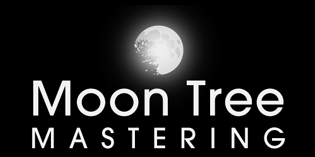Welcome to our comprehensive guide on creating the best vocal chain, where we delve into the art of capturing pristine vocals and unlocking your true sound. Whether you’re a seasoned vocalist or just starting out, having the right vocal chain can make a world of difference in the quality and impact of your recordings. In this article, we will explore the essential components that make up a stellar vocal chain, providing you with valuable insights and tips to optimize your vocal recordings.
Selecting the Right Microphone
Choosing the right microphone is paramount in building a superior vocal chain. Each microphone has its unique tonal characteristics, so it’s crucial to find one that complements your voice. Dynamic microphones like the Shure SM58 offer durability and great sound for live performances, while condenser microphones such as the Neumann U87 provide exceptional detail and sensitivity for studio recordings. Consider your budget, recording environment, and vocal style when making your choice.
Preamp and Audio Interface
The preamp and audio interface play a vital role in capturing the true essence of your vocals. A high-quality preamp, like the Universal Audio LA-610, can add warmth, depth, and clarity to your recordings. It amplifies the weak microphone signal, ensuring optimal levels and minimizing noise. Additionally, a reliable audio interface connects your microphone to your computer, offering high-resolution audio conversion and low-latency monitoring.
Essential Effects: EQ and Compression
EQ (Equalization) and compression are indispensable tools in shaping the tone and dynamics of your vocals. EQ allows you to adjust the frequency balance, removing unwanted resonances or enhancing specific ranges. Experiment with gentle boosts or cuts to achieve a well-balanced sound. Compression, on the other hand, controls the dynamic range by reducing the volume of louder sections and boosting softer parts. This evens out the vocal performance and adds polish to the overall sound.
Harnessing the Power of Reverb and Delay
Reverb and delay effects provide a sense of space and depth to your vocals, adding character and ambience. Reverb simulates the natural acoustics of different environments, while delay creates echoes and repeats. Use these effects sparingly to avoid overwhelming your vocals, finding the right balance that complements the mood and style of your music.
De-Essing and Vocal Tuning
De-essing is an important technique for controlling sibilance, which is the harsh “sss” sound in vocal recordings. A de-esser plugin, like Waves Renaissance DeEsser, helps tame these sibilant frequencies, ensuring a smooth and pleasant vocal performance. Additionally, vocal tuning tools such as Auto-Tune or Melodyne can correct pitch inaccuracies subtly, enhancing the overall pitch precision while preserving the natural character of the vocals.
Mixing and Mastering
After you’ve optimized your vocal chain, it’s crucial to mix and master your recordings to achieve a professional sound. During the mixing process, balance the levels of all the elements in your mix, making sure the vocals sit well within the overall sonic landscape. Mastering adds the final polish to your track, ensuring consistent loudness and tonal balance across different playback systems.
Conclusion
Crafting the best vocal chain requires careful consideration and experimentation. Remember, there is no one-size-fits-all solution, as every voice and musical style is unique. By selecting the right microphone, preamp, and audio interface, harnessing the power of effects, and utilizing mixing and mastering techniques, you can unlock your true sound and take your vocal recordings to new heights.
FAQs
How do I choose the right microphone for my voice?
When selecting a microphone, consider your voice’s tonal characteristics, your budget, and the intended use (live or studio).
Is it necessary to use compression on vocals?
Compression can enhance the overall sound of your vocals by controlling the dynamic range, but it’s not always necessary. Use it judiciously.
What is the purpose of vocal tuning tools?
Vocal tuning tools like Auto-Tune or Melodyne can subtly correct pitch inaccuracies, enhancing the overall pitch precision while maintaining a natural sound.
How can I prevent my vocals from sounding too processed?
Careful use of effects and subtle adjustments during mixing and mastering can help maintain the natural character of your vocals.
Should I invest in a high-end audio interface?
While high-end audio interfaces offer superior sound quality, they might not be necessary for everyone. Consider your specific needs and budget before making a decision.
